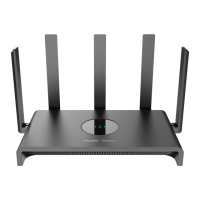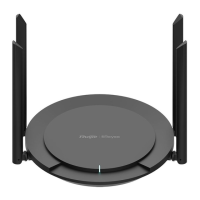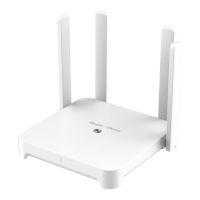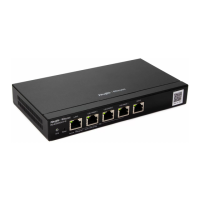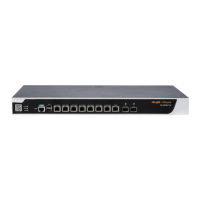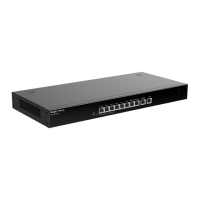Web-based Configuration Guide 1 Network Settings
79
the internal resources on the LAN device, the device can automatically add port mapping entries to realize
traversal of some services between internal and external networks. The following commonly used programs
support the UPnP protocol: MSN Messenger, Thunder, BT, and PPLive.
Before you use the UPnP service, note that clients (PCs and mobile phones) used in combination also support
UPnP.
Note
To implement automatic port mapping using UPnP, the following conditions must be met:
UPnP is enabled on the device.
The operating system of the LAN host supports UPnP and has UPnP enabled.
The programs support UPnP and have UPnP enabled.
3.15.2 Configuring UPnP
Choose Local Device > Advanced > UPnP Settings.
Turn on Enable to enable the UPnP function. Select a port from the drop-down list box of Default Interface. Click
Save to make the configuration take effect.
If any relevant program converts the port automatically, the information is displayed in the UPnP List section.
Table 3-16 UPnP configuration
Specify whether to enable UPnP. By default, UPnP is disabled.
Specify the WAN port address bound to the UPnP service. By default, the
default interface is a WAN port. On the device with multiple WAN ports, you
can manually select the WAN port to bind or set this parameter to Auto to
allow the device to select a WAN port automatically.
3.15.3 Verifying Configuration
After the UPnP service is enabled, open a program that supports the UPnP protocol (such as Thunder or BitComet)
on the client used with the device, and refresh the Web page on the device. If a UPnP entry is displayed in the
UPnP list, a UPnP tunnel is created successfully.
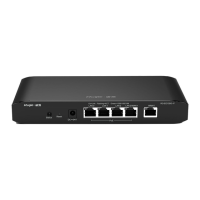
